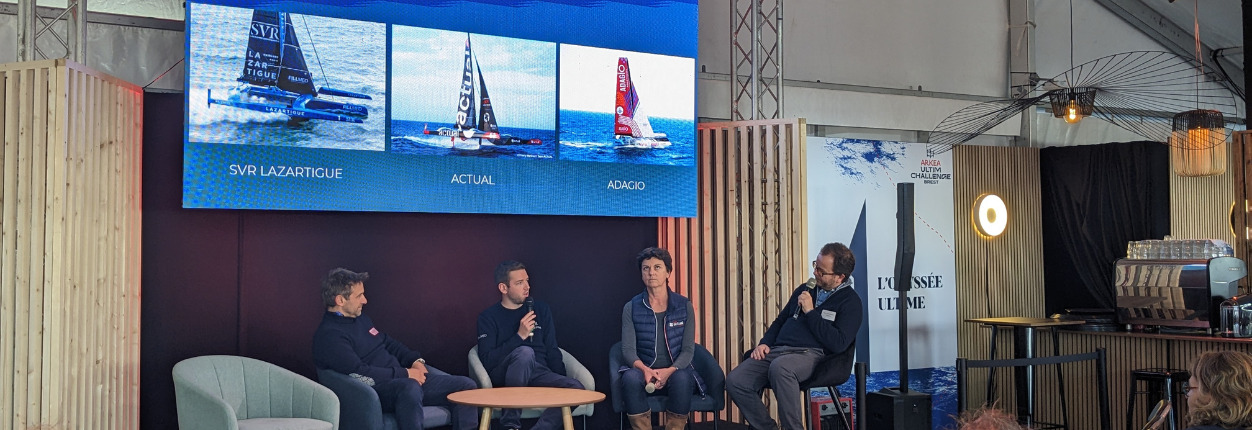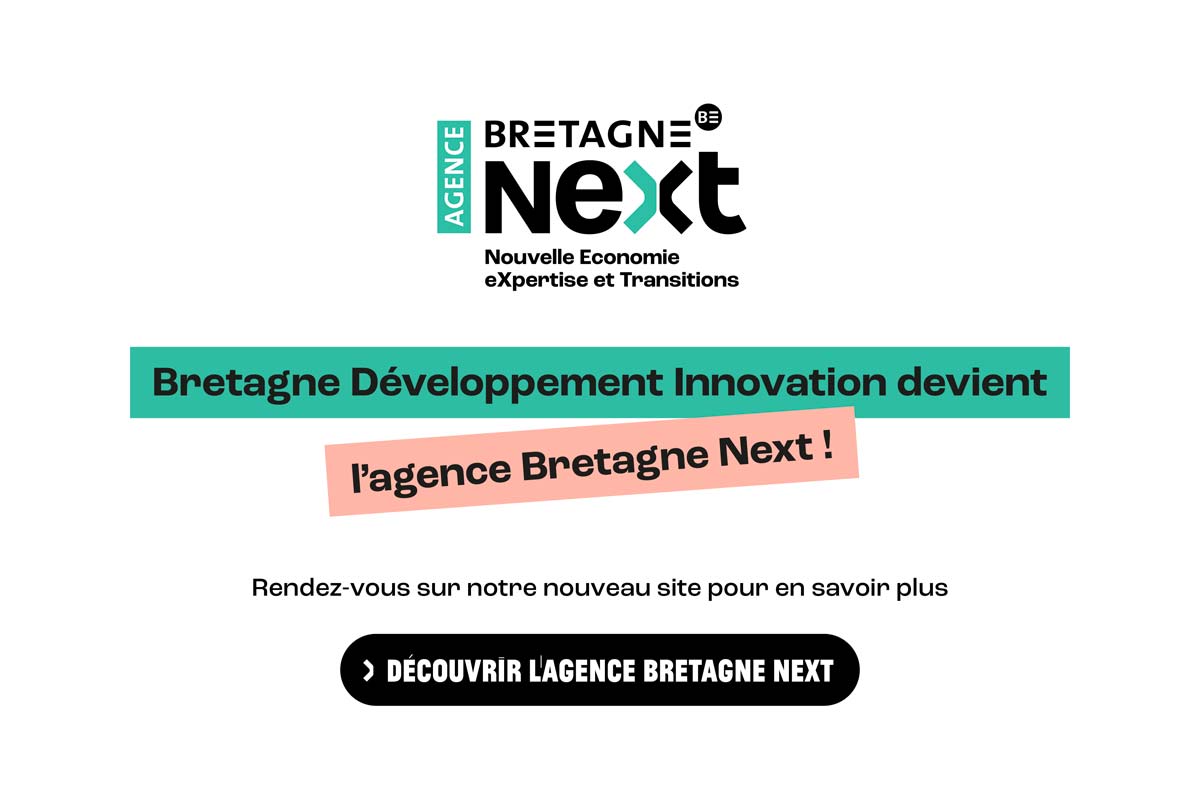Two days before the start of the Arkea Ultim Challenge-Brest (AUCB), Bretagne Développement Innovation organised a Eurolarge Innovation conference in the race village on 5 January 2024, devoted to the major sporting, technical and logistical challenges of the event, not only for the participants, but also for the Ultim class. Here is a look back at this half-day event.
The Arkea Ultim Challenge-Brest, a preparation challenge
As the first ever solo round the world race in an Ultim, the Arkea Ultim Challenge-Brest inevitably represented a major challenge for all the teams in terms of preparation. Particularly for Éric Peron’s team, who only made his participation official at the end of September on the 20-year-old Adagio, the oldest boat in the fleet. “For the boat to leave, we had to prioritise a three-month commando mission to first check her structural parts. We managed the emergencies without trying to do anything that wasn’t reasonable”, explains Christophe Boutet, who, at the head of the Brest-based structure Aloha-Attitude, is managing the yachtsman’s project.
While the other teams have had more time to prepare, they have not escaped the technical ups and downs of the 2023 season, in particular due to the proximity of the Transat Jacques-Vabre Normandie-Le Havre, which took place less than two months before the start of the round the world race. “The last few weeks have been hectic,” confirms Sandrine Bertho from Team Actual, who has had to work hard to repair “damage to the daggerboard and a foil”, which occurred during the double-handed transatlantic race and the return delivery trip to Brittany.
“The key word is adaptability,” adds Antoine Le Ster, head of partnerships at MerConcept, which is looking after the SVR-Lazartigue project, whose team had “the unpleasant surprise of discovering a crack in the boat’s forearm on the boat’s return to Concarneau”. The result was a commando refit lasting almost a month and a half – “2,000 hours of work in the middle of the end-of-year period” – which enabled Tom Laperche to arrive in Brest on his Ultim the day before the start! “It all came down to the last minute. We’re lucky to be able to count on a big construction team,” continues Antoine Le Ster.
Anticipating stopovers
Another major issue for Ultims developed for offshore sailing is that of material damage. New challenges are emerging, linked to the management of damage in this race, which allows stopovers with assistance along the way. “There has been a huge amount of anticipation”, Sandrine Bertho sums up, before adding that “it’s not neutral to send a foil to the other side of the world“.
“You have to identify the easiest ports, plan for wooden crates to transport the pieces, check the validity of the passports, etc.” adds Antoine Le Ster, who adds: “The carbon impact is not a subject we can avoid either. The decisions for these stopovers will therefore depend on the consensus reached between the skipper, the sponsor and the team.”
The safety of the sailors
As far as the organisation is concerned, it is the vast question of the safety of the six competitors that the race director, Guillaume Rottée, has been concentrating on since February 2023. His mission: “To imagine the most catastrophic situations and envisage solutions to deal with them as quickly as possible”. Particularly in the southern zones, where, despite good coordination with the authorities in each zone, “rescue is more complicated and the slightest incident can quickly become a problem”, due to the distance between the boats and land.
The four-strong race management team works closely with meteorologists, ice observation specialists (CLS) and three doctors. One of them, Laure Jacolot, notes that “the increase in the traumatic stakes is evolving in tandem with the increase in boat speed”. And although skippers systematically take helmets on board, there is still room for improvement: “Sailors are not optimally protected, especially in the event of rapid and sudden deceleration in the event of a collision”, adds this sports doctor.
The risk of collision at the heart of the debate
Collision with cetaceans is a somewhat taboo subject in the world of competitive sailing, and one that Renaud Bañuls, who represents the Share The Ocean consortium, whose aim is to collect scientific data to identify areas where there is a high concentration of marine megafauna, has been working on since 2019, and has been asked to do so by the race directors. “Collisions are now the leading cause of unnatural death for large mammals,” says the naval architect. Of course, these collisions are not solely the fault of the racing boats.
The data gathered by the consortium has made it possible to define several no-sailing zones on the course of the Arkea Ultim Challenge-Brest, a major first for a race of this scale. “This system for delimiting the invisible is not perfect, but it does exist. It illustrates a general awareness,” remarks Guillaume Rottée.
“The next challenge lies under the sea,” adds Frédéric Renaudeau of the Pôle Mer Bretagne Atlantique. “The question of detection between 0 and 10 metres remains very complicated, since sound does not propagate in a straight line,” explains this expert in maritime innovations.
What about the Ultim of the future?
The first-ever single-handed round-the-world Ultim race, the Arkea Ultim Challenge-Brest is a 22,500-mile technological test bed, which will be full of lessons for designers. “This race, in which telemetry is permitted, is a kind of shared laboratory for analysis and performance tools,” confirms Renaud Bañuls, who took part in the design of Sodebo Ultim 3 (Thomas Coville).
For his part, Xavier Guilbaud, associate architect with the VPLP Design agency (which designed Adagio, Actual Ultim 3, Banque Populaire XI and SVR-Lazartigue), believes that “there are many areas for improvement, particularly in terms of sail plans, which have changed very little in 15-20 years”.
This is all the more true given that the new class rules, which will be unveiled in the first half of 2024, will set the course for development. “One of its objectives is to make it attractive so that it can remain at a minimum of seven boats and, why not, welcome ten in the future?” says Guillaume Neron-Bancel, communications director for Actual Group, one of the members currently making up the Ultim Class.



